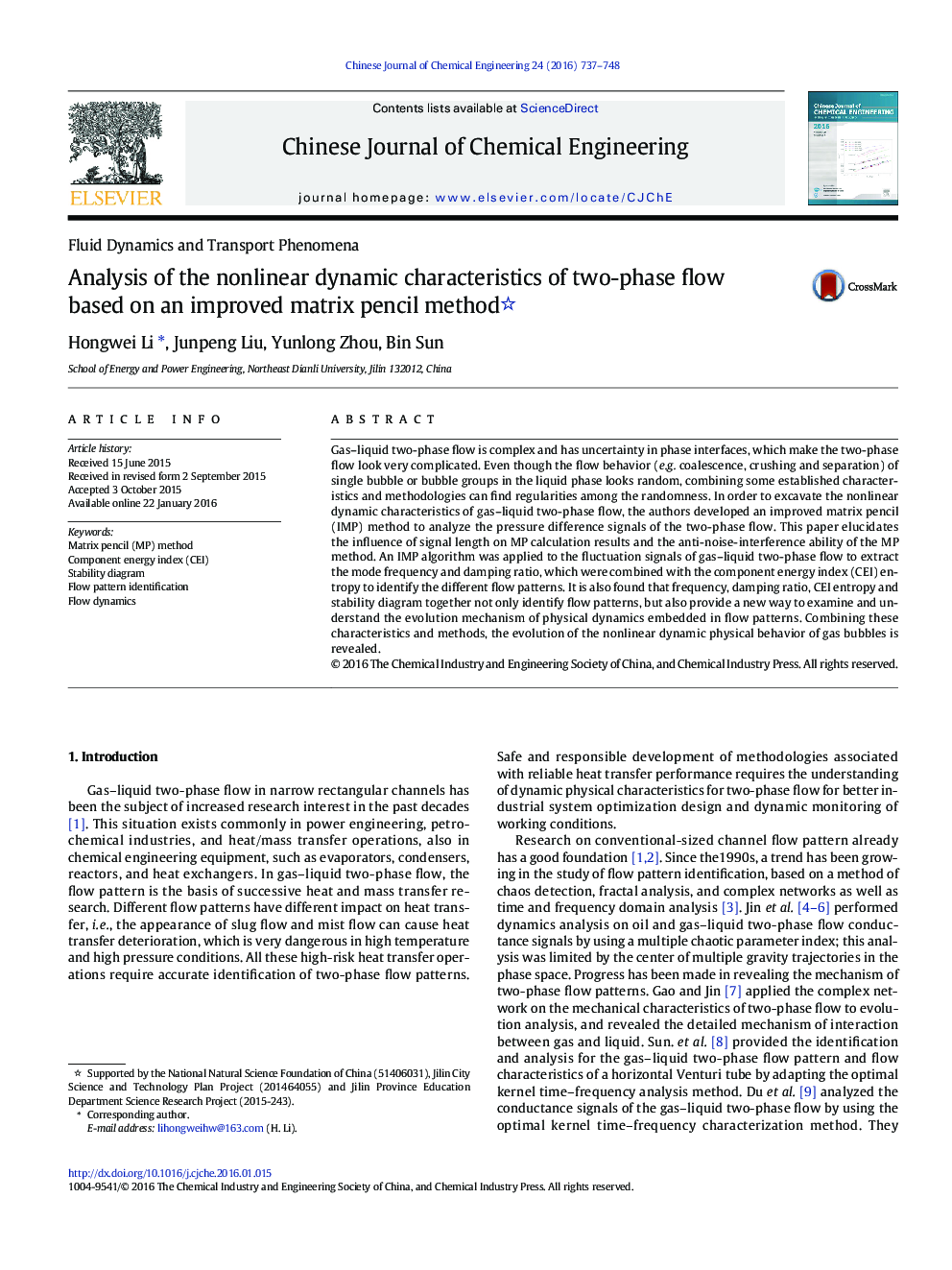| Article ID | Journal | Published Year | Pages | File Type |
|---|---|---|---|---|
| 167926 | Chinese Journal of Chemical Engineering | 2016 | 12 Pages |
Gas–liquid two-phase flow is complex and has uncertainty in phase interfaces, which make the two-phase flow look very complicated. Even though the flow behavior (e.g. coalescence, crushing and separation) of single bubble or bubble groups in the liquid phase looks random, combining some established characteristics and methodologies can find regularities among the randomness. In order to excavate the nonlinear dynamic characteristics of gas–liquid two-phase flow, the authors developed an improved matrix pencil (IMP) method to analyze the pressure difference signals of the two-phase flow. This paper elucidates the influence of signal length on MP calculation results and the anti-noise-interference ability of the MP method. An IMP algorithm was applied to the fluctuation signals of gas–liquid two-phase flow to extract the mode frequency and damping ratio, which were combined with the component energy index (CEI) entropy to identify the different flow patterns. It is also found that frequency, damping ratio, CEI entropy and stability diagram together not only identify flow patterns, but also provide a new way to examine and understand the evolution mechanism of physical dynamics embedded in flow patterns. Combining these characteristics and methods, the evolution of the nonlinear dynamic physical behavior of gas bubbles is revealed.
Graphical abstractFig. 1 The distribution of different points in the plane of CEI entropies and main frequency.Compared with that from regular channels, the information collected from tiny channels is sensitive to the reaction of the experimental environment; noise reduces the amount of effective information. Therefore, identifying the flow patterns of a tiny channel as easily as that in a regular channel is impossible. A new method is formed by improving the matrix pencil (IMP) method. This figure is a plane of the CEI entropy and main frequency of vibration mode. We divided it into five zones to identify different flow patterns using a k-means clustering algorithm. We can see that the five flow patterns are clearly distinguished. This result is caused by the combination of advantages of main vibration frequency and CEI entropy, which involve micro and macro matters. Hence, the flow pattern has a good division.Figure optionsDownload full-size imageDownload as PowerPoint slide
